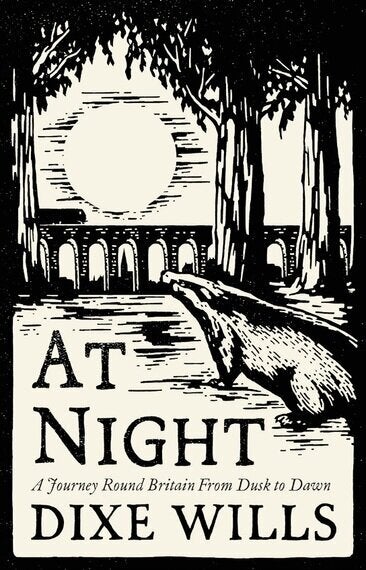Every year, around full moon, I take a group of people for a nocturnal wander around a beguiling corner of Suffolk to teach them some night-walking skills. On an eight mile ramble that starts just as the last of dusk's light is giving out, we set off along a stretch of river whose mud flats release a pungent, almost primordial scent flecked with hints of ozone from the nearby sea. Gulls, geese and waders call their goodnights and we set our course by the flashing of distant river-mouth lights, green and red, and by an illuminated church tower rising from an old-fashioned seaside resort.
Passing the skeleton of an abandoned water pump, dramatically lit by the moon's reflection on the water, we follow a creek before diving into a little natural maze. Our maps become redundant among the high hedges of gorse and we must keep an eye on the stars to ensure we do not go around in circles. Coming at last to an elegant Victorian pier we wander along the shore, passing the ghostly forms of night anglers on the shingle beach. We forge a way back inland, pick our way over a thrillingly chilling cold sink of marshland, using the lights of a pub on the river to guide us. Crossing the waterway by an old bailey bridge, we head across heathland where our hearts leap into our mouths every time a panicked pheasant springs out at us. In dense woods, we hear the calls of hunting owls, before tramping out on a board-walk over a sea of reeds, chalk white in the moonlight. We end our walk in a tiny village whose church bears the claw marks of the terrible hound of the marshes, Black Shuck. With any luck, we will not have encountered him on our way round.
En route I attempt to teach the group some tricks to help them find their way by night, when many landmarks will have disappeared from view. We all have a go at navigating by the stars, and use our ears and noses to help us stay on the right path. As we amble along, I also try to weave in my top ten - one must always have ten - night rambling tips. I'm not sure how much of any of this goes in because from a very early stage most of the party are wrapped in a sort of entranced awe at the night and its beauties, as seen both on the ground and in the sky above us. I don't have to teach people to appreciate the night because for almost everyone it is something that comes completely naturally and they find themselves both surprised and delighted at how they feel.

Ten Night Rambling Tips
Over many years of wandering across country at night, I've picked up a few insights into how to do it better. I share these with you now. The fact that there's a nice round number of tips is purely accidental, though admittedly pleasing.
1. Plan your route carefully. Good places for catching big skies include the coast (though take extra care with clifftop paths) and open areas such as moorland or fens. High vantage points with views of city lightscapes are also a bonus. Where possible, try to avoid thickly wooded areas, major roads and muddy paths.
2. Take a large-scale map, compass, head torch, some snacks and something to drink (if it gets chilly or wet, a flask of hot soup can be particularly welcome).
3. Choose a night with a big moon and, if possible, a clear sky.
4. Don't spread your possessions around you when you stop for a break. It's all too easy to mislay some small but useful piece of equipment like a compass.
5. Use your ears and nose. You may not be able to see the stream or railway line marked on your map but you may well be able to make out the rushing of water over stones or the trundling of a late-night train. Likewise, you may be able to smell a pig farm or sense the salty ozone of the sea when both are hidden from view.
6. Wear light-coloured (or, if it's not too daunting a prospect, fluorescent) clothing in order to be seen by nocturnal drivers.
7. Try not to use your head torch too much - rather let your eyes adjust to the dark and so develop some night vision.
8. On rough ground, pick your feet up more than you would normally - it will keep you from stumbling.
9. You'll naturally walk more slowly in the dark so allow yourself more time (50 per cent more, as a rule of thumb) than you would for a day walk of similar length.
10. Go with a companion and there will be someone there to help out if you turn an ankle. If you do go by yourself, let somebody know your route beforehand.